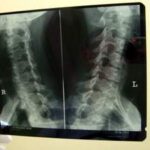A few years ago, I went to my doctor for my normal Pap smear. You can imagine what a surprise it was to me to find out that the results were anything but normal. The gynecologist discovered that on my cervix, I had pre-cancerous cells. This is what is known as cervical dysplasia.
Cervical dysplasia is used to describe abnormal cells found on the cervix’s surface. It is characterized by the following levels: mild, moderate, or severe. If the dysplasia is severe enough, a LEEP procedure is recommended to remove the damaged cells. LEEP stands for Loop Electrosurgical Excision Procedure. LEEP procedures use a very thin wire loop which emits electrical currents of radio frequency that pass through tissues to remove the abnormal areas in the cervix. The electrical current that passes through the LEEP seals blood vessels as to minimize bleeding.
Before the procedure, the doctor will place a “ground pad” across your thighs to prevent you from getting an electric shock. This ground pad is attached to the LEEP machine. So you know what th expect, the doctor will have you remove your clothes from the waist down. He will then have you lie on your back on an examination table, and your feet will be raised and supported by footrests (stirrups). Your doctor will then insert an instrument with curved blades (speculum) into your vagina, which opens the vaginal walls to make it possible to continue with the LEEP procedure.
The LEEP procedure is relatively painless. You should be in the doctors’ office for no more than thirty minutes while the LEEP is being performed. The doctor performing the LEEP will prepare your cervix for the procedure by using acetic acids (vinegar) and iodine solutions that will help the doctor examine the cervix more clearly. Of course, an anesthetic of a local nature will be applied to the cervix so that you won’t feel much pain.
There are some complications that may be associated with the LEEP procedure. You may have mild discomfort, a little pain, and some strange bleeding. The bleeding that you may experience will be a light brown, and you may even see bits of tissue that have a slightly bad smell. If you do experience heavy bleeding, or have an overwhelmingly bad odor coming from you vagina, you should contact your doctor as soon as possible.
To keep the area infection-free after the LEEP procedure you should never use tampons, have sexual intercourse, douche, or take bubble baths for six weeks. Heavy lifting and exercise is not recommended.
If done correctly, the LEEP procedure is a relatively risk-free procedure. The primary concern with doctors who are using LEEP is that they may remove too much tissue from the cervix. After the LEEP procedure, most women have more appointments every three to four months to obtain Pap smears. This is to ensure that all the dysplasia is gone and has not grown back.
I actually had the “pleasure” to watch my own LEEP procedure done. For some reason, the doctor and nurse in the room suggested that I watch the LEEP in action using a little camera that went in my vagina which was hooked up to the television. It was kind of a strange experience, but also fascinating at the same time. The bleeding was indeed minimal, and the wire loop that was sending electrical signals seemed to cut the tissue like a knife cutting cheese. There was a bit of smoke as well as the smell of smoke that was generated by the procedure, but that was just due to the electrical current. I would suggest that you take ibuprofen before the LEEP to help control any pain that you may experience. Also, remember to be relaxed, and take a few deep breaths to ease your anxiety as you feet are on the stirrups and your cervix is on display.




